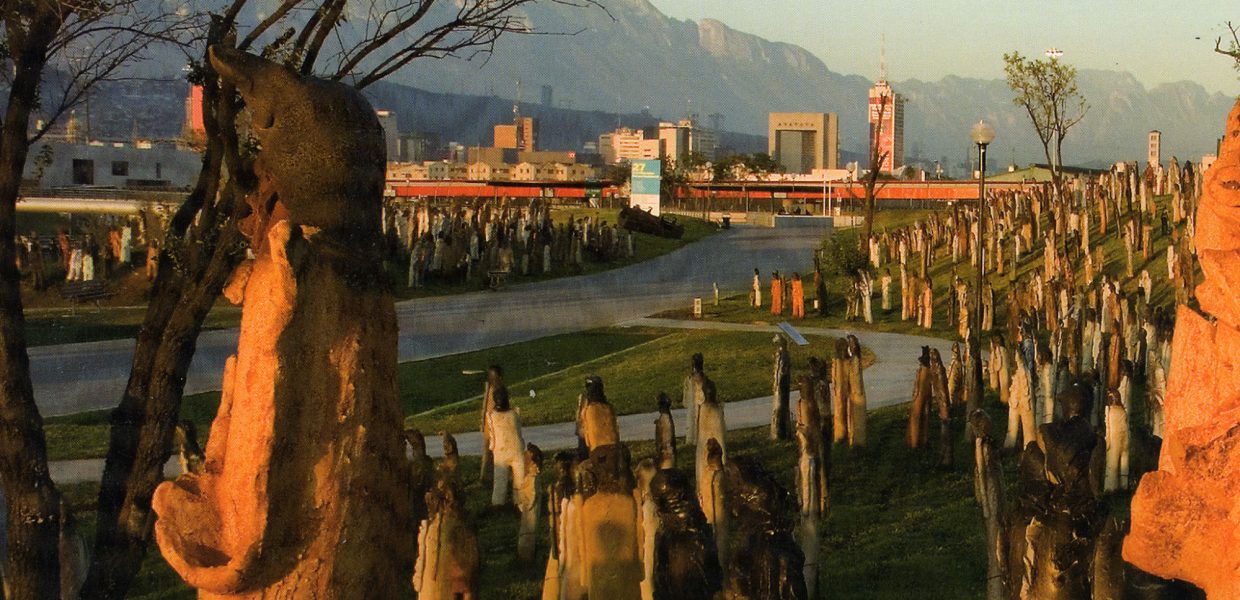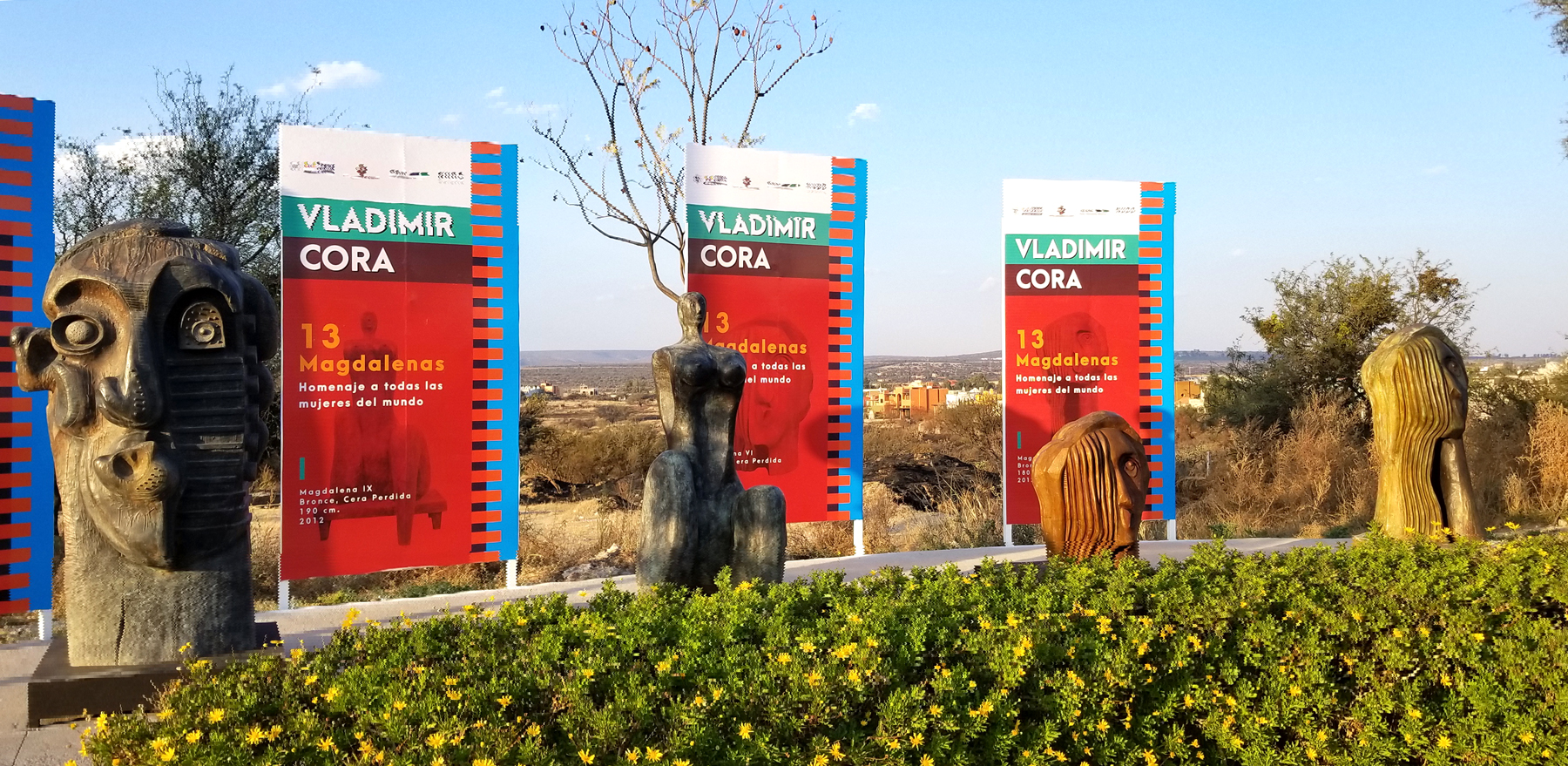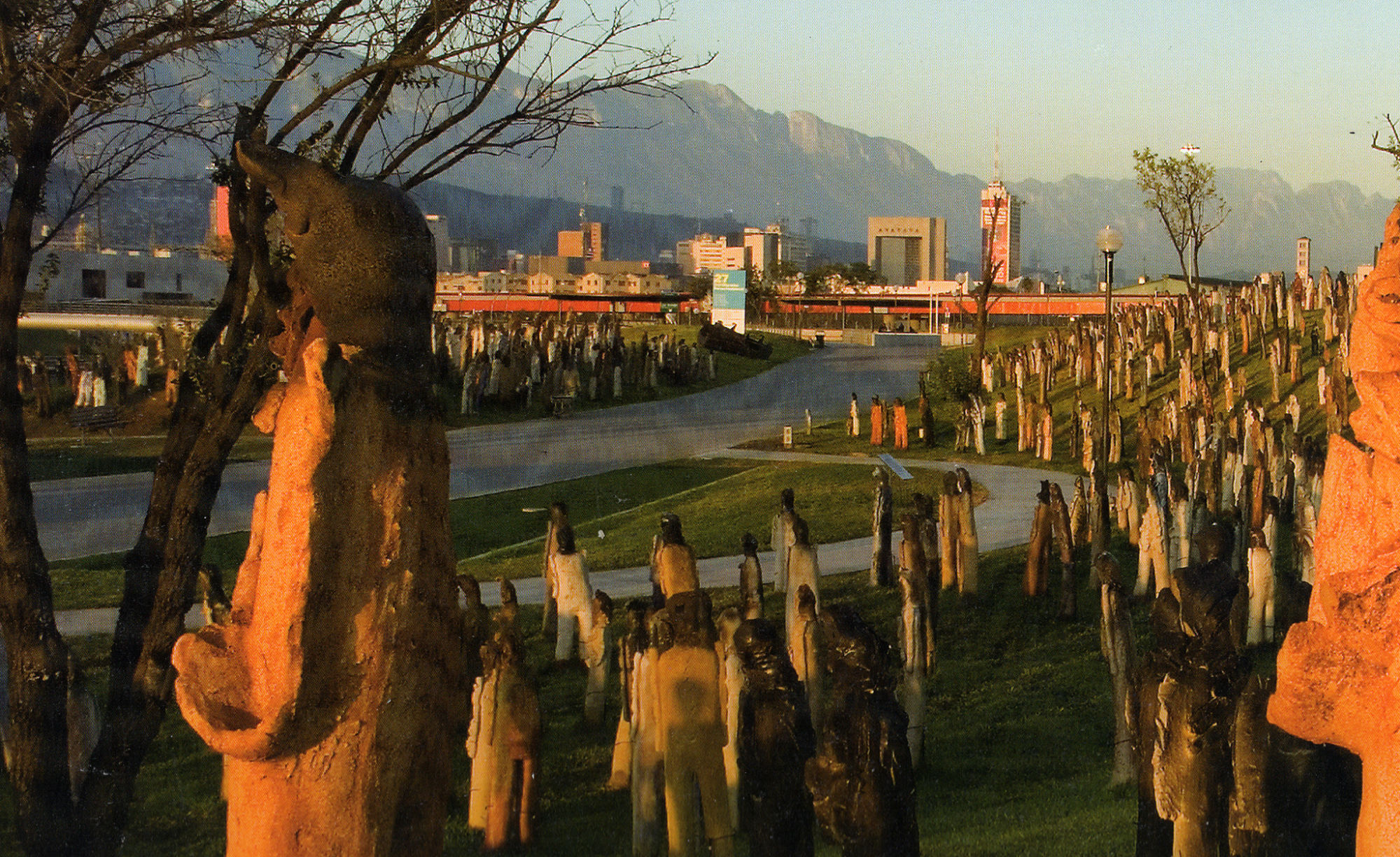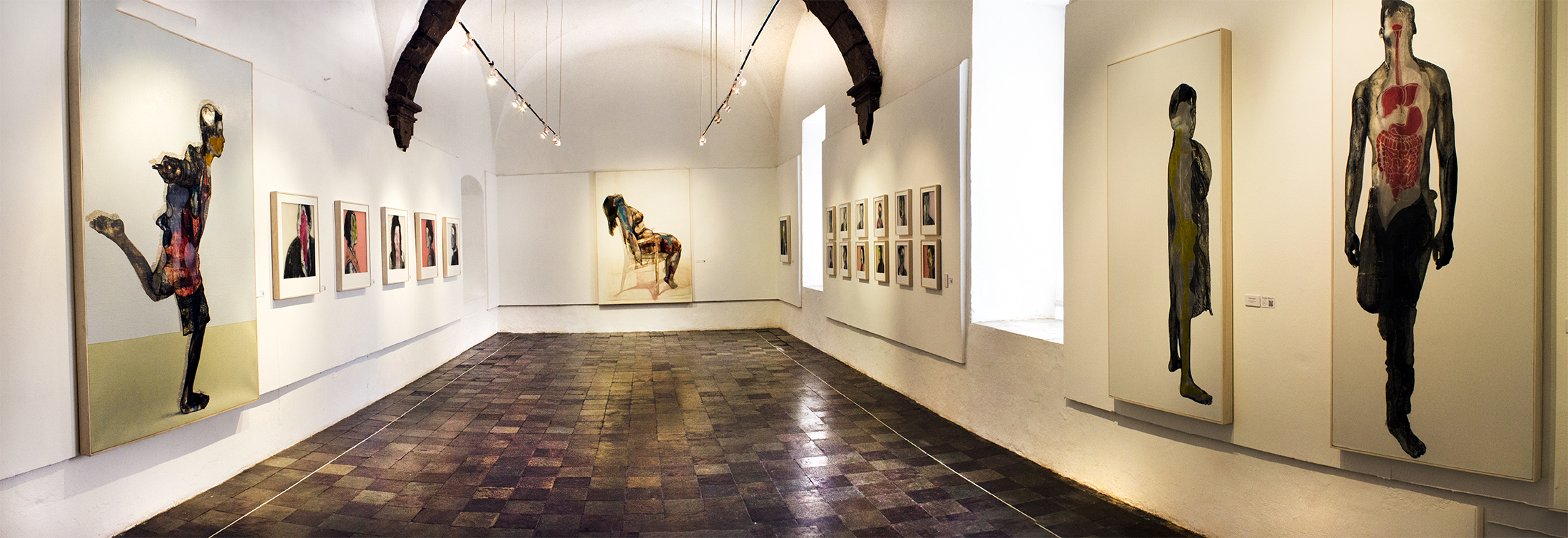English text below
Pintor Oaxaqueño
Tenía la habilidad desde pequeño de dibujar, pintar y construir. Sus obras indagan sobre el vínculo entre el aspecto físico de la conciencia, con aquello que nos une como seres humanos; explorando la condición ética del arte y las preguntas elementales sobre los materiales y la naturaleza humana. Alejandro Santiago reflexiona sobre la vida, la muerte, el ser y el renacer a través de varios medios como bronce, cerámica, gráfica, lápices de acuarela, óleo, entre otros. Su fuente de inspiración: la sociedad.
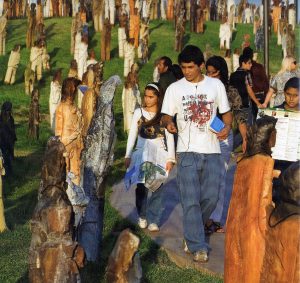
Su más importante obra es la instalación 2501 Migrantes, pieza que de alguna manera surge a partir de su regreso a Oaxaca habiendo estado 3 años viviendo en Francia. La sorpresa a su llegada fue el no encontrar de nuevo a sus amigos, vecinos, familia etc., los cuales habían emprendido el viaje hacia los Estados Unidos por cuestiones de encontrar una mejor calidad de vida y por ende una mejor retribución a su trabajo. A partir del encuentro con esta situación en el año 2003 Alejandro decide emprender el mismo viaje como migrante y a su regreso esta experiencia fue la causante más fuerte para la creación de los 2501 Migrantes, que representaban a todas esas personas tanto fallecidas en la frontera como a las que abandonan sus tierras, y a él, como seres humanos llenos de sueños y de poder conseguir aquello que en sus ciudades se encontraba ausente.
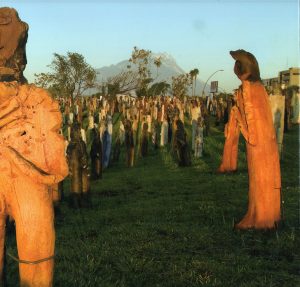
Para llevar a cabo este proyecto Alejandro comenzó a contratar jóvenes del pueblo que le ayudaran con la producción de los Migrantes, fueron capacitados por medio de los conocimientos de Alejandro. Una sola pieza les llevaba alrededor de 3 días, el proyecto en su totalidad les llevó 7 años. Esta instalación se exhibió en el Forum Universal de las Culturas en Monterrey, México en el año 2007.
En general Alejandro era una persona humilde y muy sencilla apegado a sus raíces mexicanas y que abrió la puerta de su casa, taller y conocimientos a su comunidad y el mundo entero. Fue un activista social, fundó dos centros culturales, La Telaraña y La Calera, en una antigua fábrica de cal, para brindarle a los jóvenes los conocimientos necesarios para la creación de nuevas obras de arte, donde podían aprender, interactuar y retroalimentarse tanto de sus compañeros como del mismo Alejandro. Fallece de un ataque al corazón el 22 de Julio del 2013.
Alejandro Santiago “Migrants” (1964-2013)
Oaxacan painter
He was skill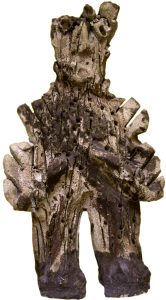 ed from childhood at drawing, painting and building. His work probes the bond between the physical aspect of awareness and that which we all share as human beings. He explores the ethical state of the art and basic questions of materials and human nature. Alejandro Santiago reflects on life, death, being and rebirth through many media, like bronze, ceramics, graphics, watercolour, oils, among others. His source of inspiration is always society.
ed from childhood at drawing, painting and building. His work probes the bond between the physical aspect of awareness and that which we all share as human beings. He explores the ethical state of the art and basic questions of materials and human nature. Alejandro Santiago reflects on life, death, being and rebirth through many media, like bronze, ceramics, graphics, watercolour, oils, among others. His source of inspiration is always society.
His masterwork is the installation, 2501 Migrants, a piece that emerged from his return to Oaxaca after a three-year stay in France. To his surprise, on his arrival his old friends, neighbours and family had set out on the journey to the United States in search of a higher standard of living and better pay for their work. Beginning with his encounter with this situation in 2003, Alejandro decided to set out on the same journey as a migrant. On his return, this experience was the basis for the creation of the 2501 Migrants, which represents the people who lost their lives along the border, those who
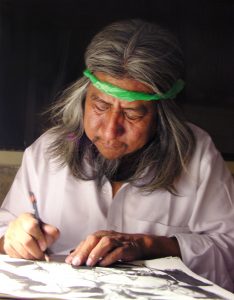
abandoned their lands and himself, as human beings with the dream of achieving that which in their own cities they were deprived of.
To carry out this project Alejandro began hiring young people from town who could help him to produce Migrants. They were trained by Alejandro. An individual piece took around three days to produce; the complete project took seven years. This installation was shown at theWorld Forum of Cultures in Monterrey, Mexico in 2007.
Alejandro was an unassuming and modest person who was close to his Mexican roots and he opened the doors of his home, studio and knowledge to his community and to the world. He was a social activist who founded two cultural centers, The Spider’s Web and the Limekiln, in an old lime factory, to provide young people with the knowledge they need to create new artworks and where they can learn, interact and get feedback from their fellow students as well as from Alejandro. He passed over from a heart attack on 22 June 2013.

